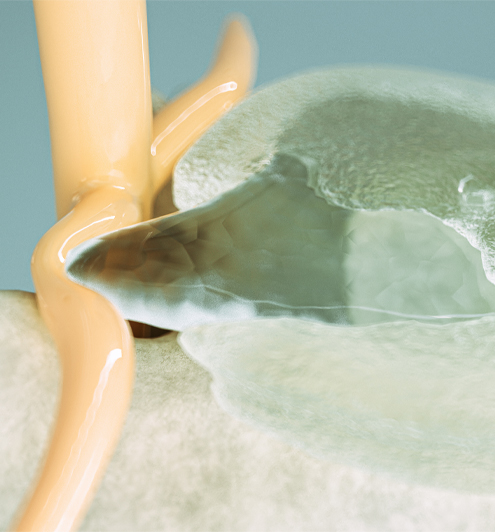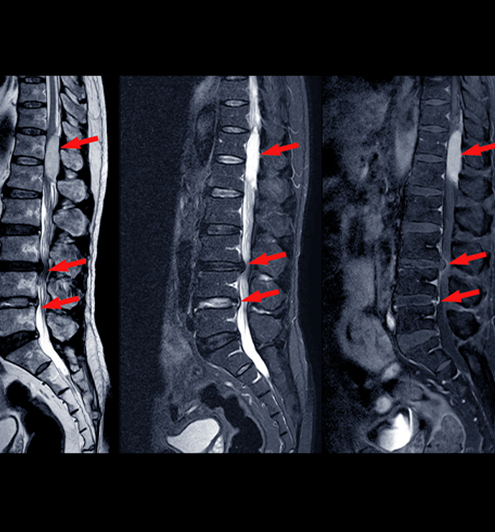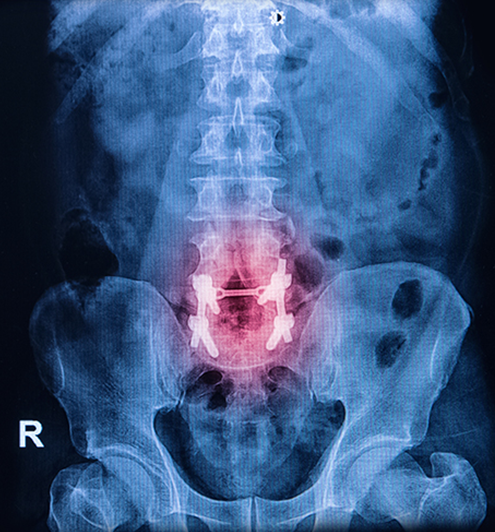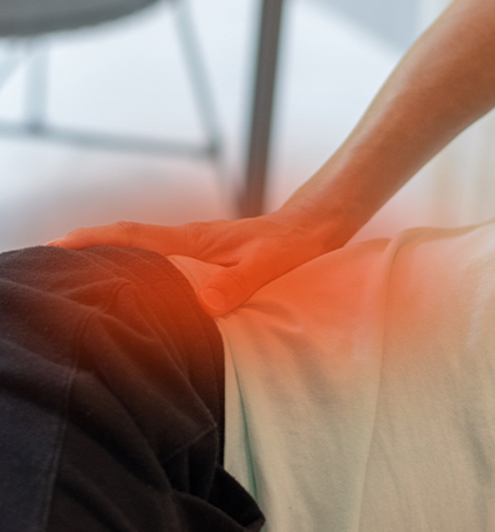SPINE SURGERY
Back
Degenerative disc disease
Disc Herniation
Lumbar Spinal Stenosis
Spondylolisthesis
Sacroiliitis
Degenerative disc disease
Degenerative disc disease in the back is a condition that involves weakening of one or more vertebral discs which normally act as a cushion between the vertebrae. This condition can develop as a natural part of the aging process but may also result from an injury to the back. When the disc degenerates the disc begins to lose many of its properties that make it a good shock absorber. For some people these tears can cause considerable pain and spasms.

Disc Herniation
Disc Herniation A herniated disc in the back may occur when too much force is exerted on an otherwise healthy intervertebral disc. Heavy forces on the back may simply be too much for even a healthy disc to absorb. A disc herniation, by definition, is displacement of disc material beyond the normal confines of the disc space. The terms disc protrusion, disc bulge, disc herniation, ruptured disc, and slipped disc all mean the same thing and imply that disc material has left the normal disc space. Treatment of a herniated disc depends on the severity of symptoms and apparent nerve damage. Most disc herniations improve in six weeks to three months from the initial injury.
Lumbar Spinal Stenosis
Lumbar Spinal Stenosis refers to a narrowing of the spinal canal to a degree where the spinal cord or nerve roots may be compromised. Spinal stenosis may occur throughout the spine but is more common in the low back and in the neck. Symptoms depend on whether narrowing affects the spinal nerve roots, the spinal cord, or both. Spinal stenosis can cause patients to have symptoms in the arms or legs.

Spondylolis-thesis
Spondylolisthesis means the forward slippage of one lumbar vertebra in relation to the vertebra below. Spondylolisthesis can be caused by several mechanisms. The two main causes are from either a stress fracture in the vertebra or by acquired degenerative changes in the facet joints. This condition is most commonly found in the lumbar spine as these levels bear the most weight.
Sacroiliitis
Pain from inflammation of the sacroiliac joint is commonly called sacroiliitis. This is often felt as pain on one side of the lower back to the right or left of midline where the joint is located. The inflamed joint can become dislocated, as if the lock and key grooves are in the wrong position. When SI joint dysfunction is severe, pain can refer to the hip, groin, buttocks, and even down the back of the thigh. Pain may be worse with movements that stress that joint, such as standing up from a seated position, walking up an incline, elliptical exercise, prolonged sitting or walking, or twisting when rolling in bed at night. Sacroiliac joint (SI) dysfunction or inflammation can mimic pain similar to degenerative hip disease, hip bursitis, lumbar disc herniation, or pinched nerves.
